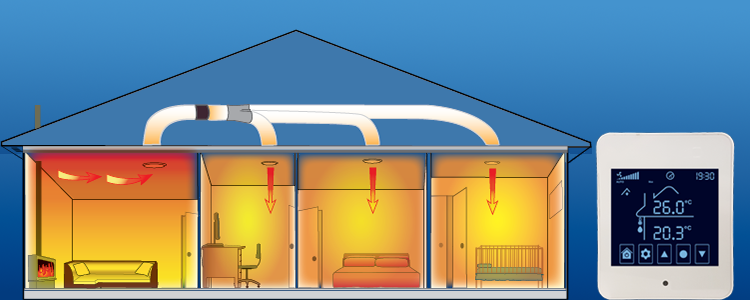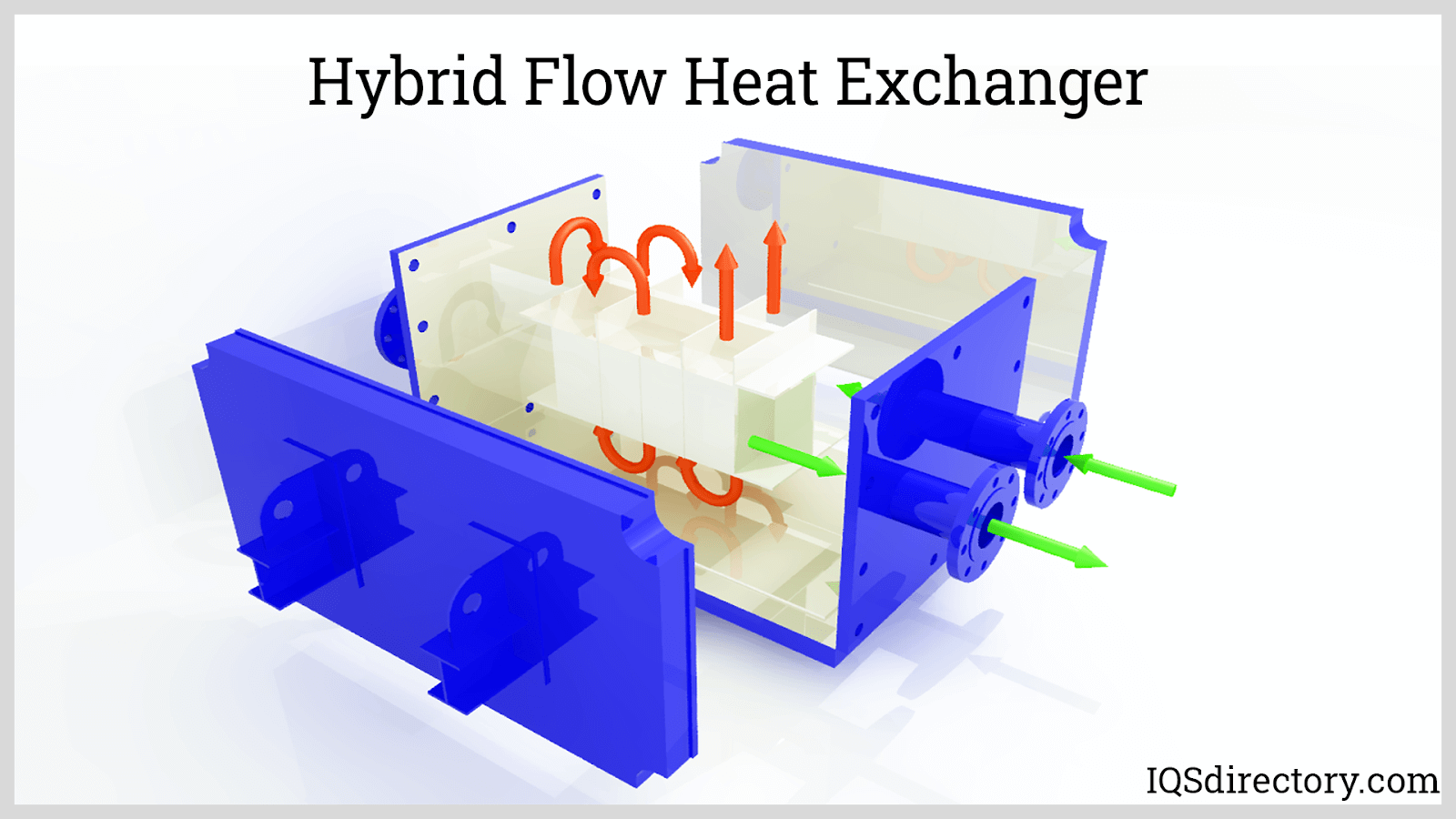Using Machine Learning in DVS Heat Transfer Systems for Smarter Heat Regulation
Wiki Article
A Comprehensive Overview to Choosing the Right Heat Transfer Solutions for Your Demands
Selecting the ideal Heat transfer system is important for operational performance. Numerous systems deal with various demands, influenced by factors such as temperature variety and fluid type. Comprehending the concepts behind Heat transfer, such as convection, radiation, and transmission, is critical. Furthermore, reviewing energy resources and upkeep methods can affect long-lasting performance. A closer examination of these factors to consider discloses just how to tailor a system to certain requirements. What should one prioritize in this complicated decision-making process?Recognizing Heat Transfer: Key Principles and Principles
Although Heat transfer might look like a straightforward principle, it includes a range of principles that are essential for reliable system layout. Understanding these principles is important for designers and designers that intend to maximize thermal efficiency in numerous applications. Transmission, for circumstances, includes the transfer of Heat with solid materials, while convection refers to the motion of Heat within fluids. Radiation, one more vital principle, explains just how Heat can be moved through electro-magnetic waves. Each of these systems plays an essential function in identifying just how power moves within a system. By extensively realizing these ideas, professionals can make enlightened choices, making sure that Heat transfer systems operate efficiently and fulfill the particular demands of their applications
Kinds of Heat Transfer Equipments: A Review
Comprehending the concepts of Heat transfer prepares for exploring the numerous kinds of Heat transfer systems available. Heat transfer systems can be categorized mainly right into three types: radiation, convection, and transmission. Conduction entails Heat transfer via solid products, depending on straight get in touch with between particles. Convection, on the various other hand, occurs in fluids (fluids and gases) where the movement of the liquid itself helps with Heat transfer. Radiation includes the transfer of Heat with electromagnetic waves and does not require a medium, enabling it to occur in a vacuum cleaner. Each kind of system has unique features and applications, making it vital for people and companies to thoroughly evaluate their particular demands when picking one of the most appropriate Heat transfer option.Applications of Heat Transfer Systems in Various Industries
Heat transfer systems play a necessary duty throughout different sectors, affecting performance and product high quality. In industrial production procedures, they help with precise temperature level control, while in food and drink handling, they ensure safety and security and preservation. Additionally, a/c and climate control systems count heavily on efficient Heat transfer to preserve comfy settings.Industrial Production Processes

Numerous commercial manufacturing procedures count heavily on reliable Heat transfer systems to make the most of efficiency and enhance product quality. In fields such as metalworking, Heat exchangers play an essential duty in keeping optimal temperatures during welding, casting, and building. These systems guarantee consistent Heat distribution, which is essential for achieving desired product residential properties. Likewise, in the chemical production industry, Heat transfer systems help with accurate temperature level control throughout reactions, impacting yield and security. Additionally, in textile manufacturing, efficient Heat management is necessary for coloring and ending up procedures, affecting color uniformity and textile top quality. By choosing proper Heat transfer modern technologies, producers can boost energy efficiency and lower functional prices, eventually bring about a more lasting and affordable manufacturing environment.
Food and Drink Handling
Reliable Heat transfer systems are similarly crucial in the food and beverage handling market, where maintaining ideal temperature levels is important for food safety and quality. These systems play a crucial role in procedures such as pasteurization, sanitation, and cooking, making sure that products are secure for consumption and keep their dietary value. Heat exchangers, for example, effectively move Heat in between liquids, enhancing energy usage while lessening temperature changes. In addition, refrigeration systems are essential for preserving subject to spoiling things and prolonging shelf life. The choice of Heat transfer modern technology straight affects operational efficiency and item integrity, making it critical for food and beverage suppliers to pick the ideal systems customized to their details handling needs. This careful selection inevitably adds to customer complete satisfaction and food safety.
HVAC and Climate Control
While many industries depend on Heat transfer systems for efficiency, HEATING AND COOLING (Heating, Air Flow, and A/c) plays a crucial function in keeping interior climate control across different setups. These systems utilize Heat transfer concepts to control moisture, temperature level, and air top quality, making certain comfort and security in household, business, and commercial settings. Appropriately made heating and cooling systems improve energy efficiency, decrease operational costs, and reduce ecological effect. In business buildings, for circumstances, reliable climate control adds to employee performance and consumer satisfaction. In commercial applications, a/c systems aid keep perfect problems for equipment procedure and item preservation. Picking the right Heat transfer system is essential for meeting specific environment control requirements and accomplishing overall system performance.Examining Power Sources for Heat Transfer Equipments
In reviewing energy sources for Heat transfer systems, a comparison of sustainable energy options and nonrenewable fuel source factors to consider is crucial. Eco-friendly sources, such as solar and wind, deal sustainable options that can decrease environmental effect. Conversely, fossil fuels continue to be prevalent due to their recognized facilities and energy density, triggering a careful analysis of both choices.Renewable Power Options

Nonrenewable Fuel Source Considerations
Reviewing fossil fuel factors to consider is necessary for the efficiency and sustainability of Heat transfer systems. Fossil fuels, such as all-natural gas, oil, and coal, are standard power resources that provide considerable Heat result, making them preferred choices for household and industrial applications. Nevertheless, their environmental effect, consisting of greenhouse gas emissions and source depletion, elevates problems. When choosing a warmth transfer system, it is important to examine the accessibility, cost, and governing elements associated with these gas. In addition, the effectiveness of fossil fuel systems need to be considered, as greater efficiency can minimize some environmental drawbacks. Inevitably, a well balanced method evaluating performance and sustainability can lead decision-makers towards one of the most suitable Heat transfer solution for their specific demands.Elements to Consider When Choosing a Warmth Transfer System
Picking an appropriate Heat transfer system calls for mindful consideration of numerous aspects that can considerably impact performance and efficiency. One vital factor is the operating temperature level range, which determines the products and style suitable for the application. Furthermore, the kind of liquid used in the system-- whether gas or fluid-- influences Heat transfer efficiency and compatibility. The system's size and capability should align with the certain demands of the procedure to stay clear of inefficiencies. Energy source accessibility is also crucial, influencing operating expense and sustainability. The installation atmosphere, consisting of space constraints and ease of access for upkeep, plays a considerable duty in system choice. Regulative compliance and security standards must be considered to assure the system fulfills all lawful demands.Maintenance and Efficiency Optimization for Heat Transfer Systems
Preserving Heat transfer systems is necessary for guaranteeing optimal performance and durability. Normal maintenance activities, such as cleaning up Heat exchangers and checking insulation, assistance protect against performance losses as a result of fouling and thermal bridging. Furthermore, monitoring system specifications, including stress and temperature level, enables early discovery of abnormalities, lessening downtime and costly repairs. Carrying out a preventative upkeep timetable can maximize performance and prolong the life-span of parts. Updating to advanced control systems can boost operational performance by readjusting to varying conditions and lots. By focusing on upkeep and performance optimization, drivers can attain lowered energy usage, reduced operational prices, and improved total system dependability, inevitably causing far better resource application and an extra sustainable operation.Future Trends in Heat Transfer Technologies
As sectors progressively focus on sustainability and energy performance, future fads in Heat transfer technologies are set to undertake significant makeovers. Innovations such as advanced products, consisting of carbon nanotubes and nanofluids, guarantee improved thermal conductivity and efficiency. Furthermore, the assimilation of sustainable energy resources right into Heat transfer systems is acquiring energy, promoting green services. Smart technologies, consisting of IoT sensors, are anticipated to reinvent monitoring and control, allowing real-time information evaluation for enhanced important source efficiency. In addition, the advancement of modular and portable systems will help with much easier setup and maintenance, dealing with diverse applications. These developments indicate a shift in the direction of even more sustainable, effective, and versatile Heat transfer services, straightening with global energy objectives and ecological standards.
Often Asked Questions
What Are the Environmental Impacts of Heat Transfer Systems?
The environmental impacts of Heat transfer systems can consist of greenhouse gas exhausts, energy usage, and possible thermal air pollution. In addition, improper disposal of ineffectiveness and materials can add to source depletion and community disturbance.Just how Do I Determine the Cost-Effectiveness of a Heat Transfer System?
To determine the cost-effectiveness of a warmth transfer system, one have to analyze first prices, operational costs, upkeep needs, and energy efficiency, comparing these variables against the expected life expectancy and performance of the system.Can Heat Transfer Solution Be Used in Residential Setups?
Heat transfer systems can indeed be utilized in property settings. They supply effective heating and cooling options, making homes more comfortable while possibly lowering power costs. Their convenience enables for various applications in household atmospheres.What Safety Regulations Apply to Heat Transfer Equipments?
Safety and security regulations for Heat transfer systems usually consist of guidelines on maintenance, procedure, and installation. Compliance with regional building ordinance, supplier requirements, and industry standards is necessary to guarantee reliable and risk-free system performance in numerous applications.How Do Different Products Affect Heat Transfer Effectiveness?

Conduction, for instance, includes the transfer of Heat with solid materials, while convection refers to the activity of Heat within fluids. Understanding the principles of Heat transfer lays the groundwork for discovering the various types of Heat transfer systems offered. Heat exchangers, for circumstances, efficiently Bonuses move Heat in between fluids, enhancing energy use while minimizing temperature changes. In examining energy resources for Heat transfer systems, a contrast of renewable power alternatives and fossil gas factors to consider is crucial. Metals, such as copper and aluminum, conduct Heat effectively, whereas insulators like rubber and glass reduce down Heat circulation.
Report this wiki page